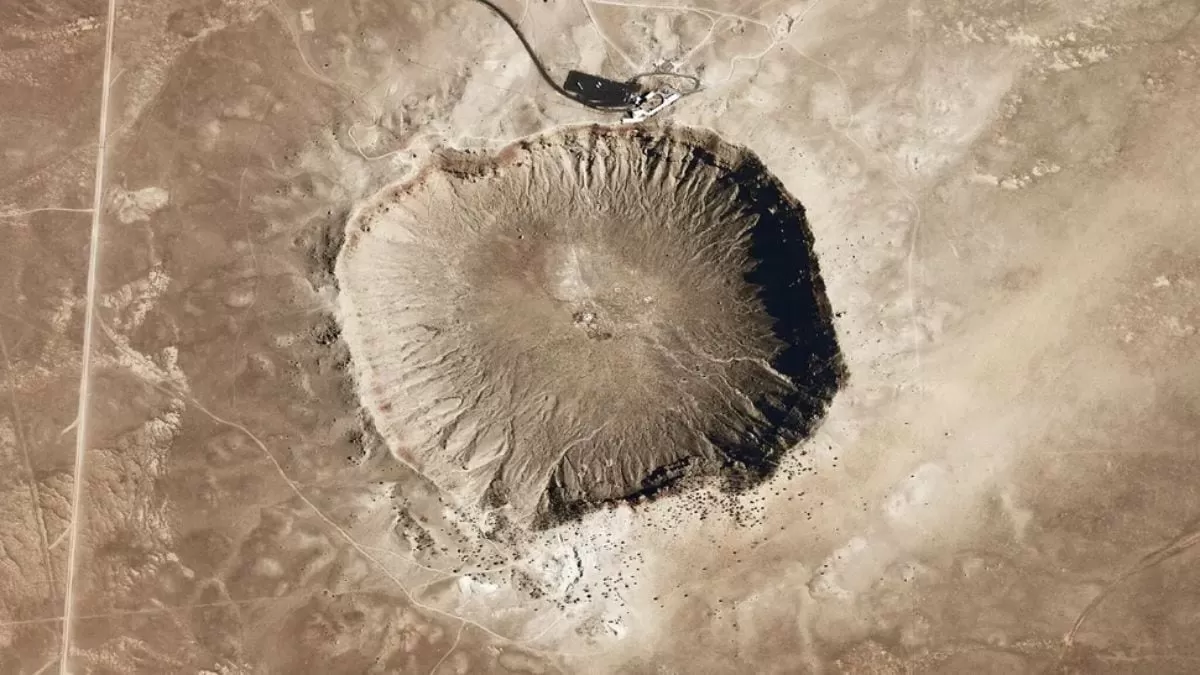Located in the remote Pilbara region of Western Australia, the Miralga impact crater has long been a subject of fascination for geologists and astrobiologists alike. Originally thought to be Earth’s oldest impact crater at 3.5 billion years old, the recent discovery of new evidence has redated the crater to be much younger, at around 2.7 billion years old. While this news may seem disappointing to some, it has opened up new possibilities for scientific study and exploration.
The Miralga impact crater was first discovered in the 1990s by Dr. Arthur Hickman, a geologist from the University of Western Australia. Its unusual circular structure and geological features caught the attention of scientists, who believed it to be a remnant of a meteorite impact from Earth’s early history. This theory was further supported by the initial dating of the crater to 3.5 billion years ago, which placed it at a time when the Earth was still in its infancy.
However, recent research conducted by a team of international scientists has shed new light on the true age of the Miralga impact crater. Through the use of advanced dating techniques and the analysis of rock samples from the crater, it has been determined that the impact actually occurred much later, around 2.7 billion years ago. This new date places the event much closer to the time when the Earth’s first continents were forming.
The revised age of the Miralga impact crater may come as a surprise to many, but it has significant implications for our understanding of the early Earth. The original belief that the crater was formed during a time when the Earth’s crust was still forming and life was just beginning has now been challenged. This means that the Miralga impact crater can no longer serve as evidence for these early stages of Earth’s development.
However, this does not diminish the scientific value of the Miralga impact crater. In fact, the new date has opened up a whole new avenue of research and exploration. With a revised diameter of just 16 kilometers, the crater is now believed to be more similar in size to impact craters found on other planets, such as Mars. This makes it an ideal site for studying Mars-like planetary geology and gaining insight into the formation and evolution of other terrestrial planets.
Furthermore, the younger age of the Miralga impact crater has raised questions about other impact craters found on Earth. Could they also be younger than initially thought? This new discovery has sparked a renewed interest in studying impact craters and their effects on Earth’s early history.
The Miralga impact crater may no longer support theories of early crust or life formation, but it remains a valuable site for scientific research and exploration. Its unique geological features and revised age make it an important location for studying the Earth’s early development and the formation of other planets. This discovery also highlights the ever-changing nature of scientific knowledge and the importance of continuously reevaluating and challenging existing theories.
In addition, the Miralga impact crater serves as a reminder of the vastness and complexity of our planet’s history. As new technologies and techniques emerge, we are able to uncover new insights and revise our understanding of the world around us. The Miralga impact crater will continue to be a source of fascination and inspiration for generations to come, and its significance in the scientific community is sure to grow as we continue to unlock its secrets.
In conclusion, while the Miralga impact crater may have lost its title as Earth’s oldest impact crater, it has gained a new and exciting purpose. With its redating to 2.7 billion years ago and a revised diameter, the crater now offers a unique opportunity for scientists to study Mars-like planetary geology and gain a deeper understanding of the Earth’s early development. This discovery serves as a testament to the ever-evolving nature of scientific knowledge and the endless possibilities for exploration and discovery.

